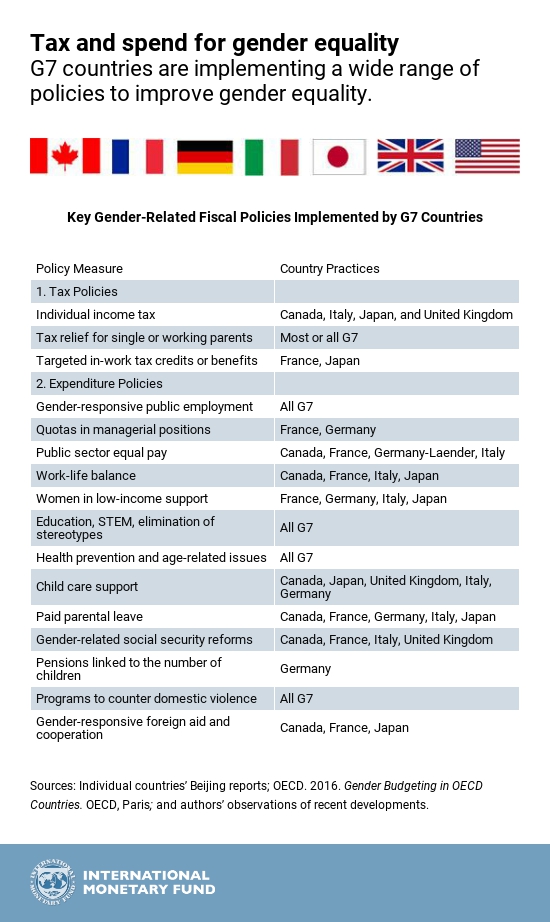Women’s economic empowerment has long been an international priority.
The G6—as it was then—was first created in 1975, a year named ‘International Women’s Year’ by the United Nations to help more women worldwide realise their full potential.
Mountain climber Junko Tabei masterfully demonstrated this potential when she became the first woman to conquer Mount Everest in that year.
However, as the world dealt with the aftermath of the first oil shock and the end of the fixed exchange rate system, global economic stability and women’s empowerment were rarely part of the same conversation.
How times have changed. Today, in discussions on the global economy, female economic empowerment is almost always on the agenda.
Women’s economic empowerment matters
This is, first of all, because women matter, full stop. Second, there are large benefits for all of society, and this includes men, women, and children, to be had from raising women’s participation in the economy—it can boost GDP growth, help economies diversify, and tackle income inequality.
At the IMF, we are incorporating gender-related considerations in the policy advice we provide to our member countries—so far, we have completed consultations along these lines with 22 countries, with more to come.
Our recent programs—including with Egypt, Jordan, and Niger—also contain specific measures to help empower women economically.
To inform the G7 discussion of gender equality, under the Italian Presidency, the IMF prepared a paper—Gender Budgeting in G7 Countries.
One of the lessons of the paper is that, despite progress made by most G7 countries in improving gender equality (see chart below), there is still a large unfinished agenda.
For example, in advanced industrial countries, women’s labor market participation rate is about 17 percentage points lower than men’s.
The wage gap between women and men amounts to roughly 14%.
The share of male managers is almost double that of women, and almost 70% of unpaid work is performed by women.
Budgets should promote gender equality
The point I was making to the G7 countries is that, to make further progress, national budgets can be used more actively as a tool to support gender equality.
For example, in advanced economies, tax policies play an important role in addressing disincentives for secondary earners to work.
Spending policies can help too, for instance by supporting childcare facilities.
One example is the Canadian child benefit scheme, which helps families with the cost of childcare through a tax-free, income-tested benefit.
This and other examples are listed in the table below.
Gender-responsive budgeting is about analysing fiscal policies and budgetary decisions to understand their impact—both intended and unintended—on gender equality. Such approaches can be applied at all stages of the budget cycle.
While G7 countries have made effective use of a wide range of fiscal and nonfiscal policies to reduce gender inequality, they have generally made less progress in developing the broad-based budgetary institutions that are essential to mainstream gender policies.
For example, only Canada, France, and Japan publish a gender budget statement. And while most G7 countries undertake a gender impact assessment of new policy proposals, the approaches and methodologies vary widely.
More work to be done
What else could G7 countries do to strengthen their budgetary institutions’ consideration of gender issues?
- Gender budgeting needs to be mainstreamed. This includes embedding gender issues in the annual dialog between ministers on budget priorities, and in other budget routines.
- Budget execution should be monitored for its impact in a transparent way. The involvement of legislatures and civil society, as well as proper auditing, are key to ensure accountability.
- Long-term gender strategies should involve all aspects of the budget process. For instance, greater use should be made of budget statements and guidelines that set priorities for gender-related expenditures, ensure adequate medium-term funding, and assess the gender impact of policies.
At the IMF, we will continue to work on these issues as part of our broader efforts to promote inclusive growth. This includes, for example, providing technical assistance to over 120 countries—including recent work on Cambodia’s financial information systems, the Medium-Term Budget Framework in Ukraine, and the Fiscal Transparency Evaluation in Austria, just to name a few representative cases. And we remain committed, across the full range of our activities, to helping women make the most of their economic potential.
Just as Junko Tabei went on to become the first woman to climb the ‘Seven Summits’—the highest mountains across seven continents—today many women are scaling heights in the workplace and the wider economy. But much remains to be done.
Therefore, I am calling on G7 policymakers to strengthen gender budgeting to contribute to women’s economic empowerment and promote global economic stability at the same time.
This blog was first published by the IMF in May last year.
















